In the troposhere temperature tends to decrease as height increases. In the theoretical International Standard Atmosphere the temperature decrease or ‘lapse rate’ is defined as 1.98oC per 1000 feet gain in altitude. Like most things theoretical this doesn’t always happen in practice. Almost always at some level in the troposhere the temperature will increase with height with the result that there is a warm layer of air above a cooler layer. This condition is known as a temperature inversion.
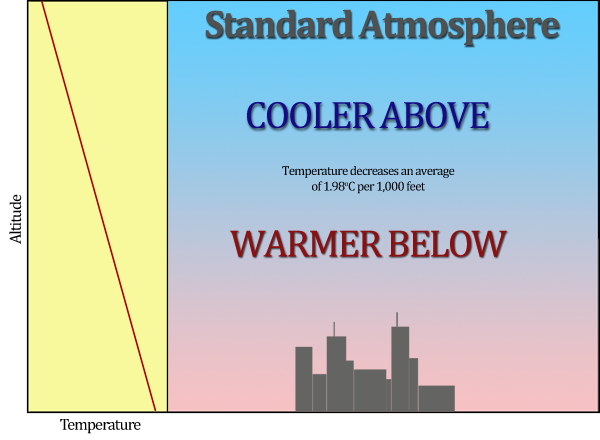
There are several mechanisms by which inversions are formed. Radiation inversions, Frontal inversions and Subsidence inversions are the most common.
Radiation Inversions
Radiation inversions are probably the most common type of temperature inversion. They form near the earth’s surface during the night. After sunset, especially on a clear night the earth’s surface cools because energy is radiated to space. The air which is just above the earth cools through contact with the cool surface. Air is a poor conductor of heat so only a thin suface layer of air is cooled leaving the air above almost unaffected and therefore warmer. Gentle breezes overnight can cause some mixing the air near the surface leading to the cool layer becoming slightly thicker as the night progresses. Some turbulence and reduced visibility can be evident below the inversion layer.
Cloudy skies and strong winds reduce the likelihood of a radiation inversion forming.
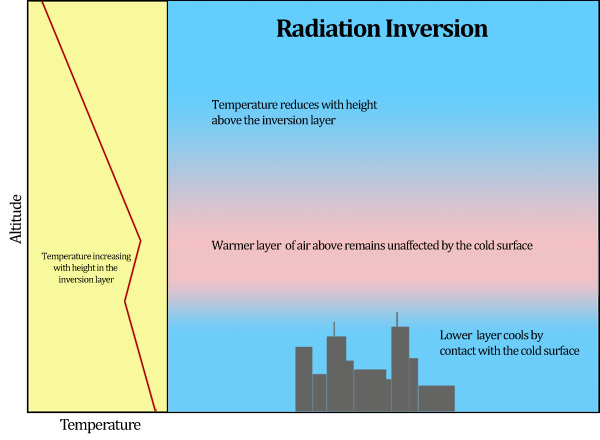
Frontal Inversions
Frontal inversions occur where a mass of cold air moves into a region that was previously occupied by a warm air mass. The cold air, being more dense slides in underneath the warmer air lifting the warm air up. This results in the warm air mass overlaying the cold air, thus an inversion.
Any local heating of the cold air will cuase it to rise but the lifting will not continue above the frontal inversion unless the rising air mass is warmer than the overlaying warm layer.
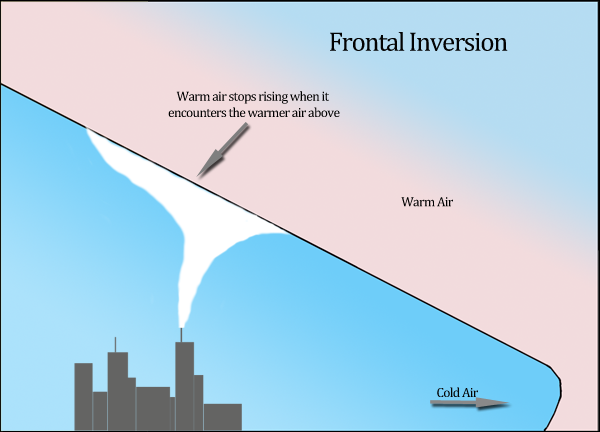
Subsidence Inversions
The slow sinking of air in areas of high pressure gives rise to another type of inversion, the subsidence inversion. Subsidence inversions are formed when a mass of air descends and warms adiabatically. The subsiding air mass almost never continues downward to the earths surface because there is always some, however slight turbulent mixing taking place keeping the air below the inversion cooler.
Subsidence inversions are always found well above ground level, usually in the range 8,000 – 12,000 feet but they do occur anywhere from 5,000 – 18,000 feet. The layers above and below the inversion are usually quite unstable whilst the inversion layer itself is very stable.
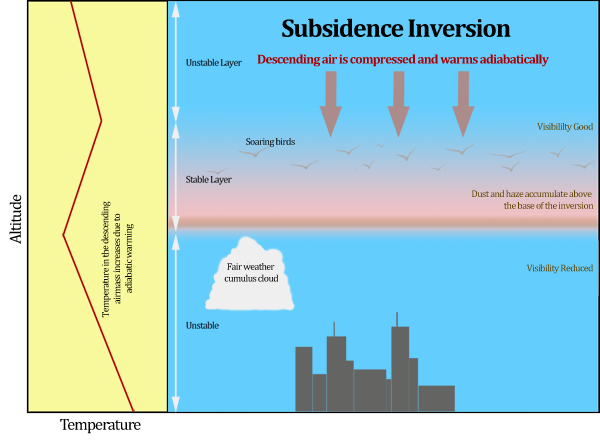
Effect of Temperature Inversions on Climb and Descent
Recognising a Temperature Inversion: The temperature changes found within a piece of the atmosphere that includes an inversion layer affect a balloon when climbing or descending through the inversion layer.
Consider the case of a balloon that is descending towards an inversion. As the balloon begins to penetrate the bottom of the inversion it will encounter cooler more dense air. As there is now a greater difference in temperature inside the balloon compared to outside the balloon, more lift will be generated which will cause the descent rate to reduce. On cold winter mornings where there can often be temperature differences of 10oC or more at the bottom boundary of the surface inversion the descent rate may even reduce to zero.
When climbing towards an inversion from below the top of the balloon will encounter the warmer air mass and create less lift because there is now less difference between the temperature inside the balloon when compared to outside the balloon. As a result of the reduction in lift the balloon’s ascent rate will reduce.
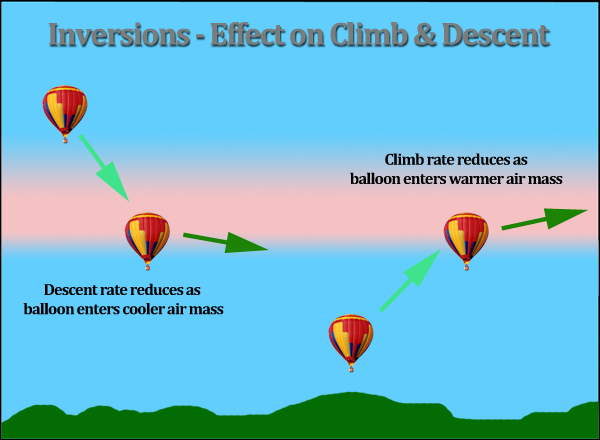
Windshear
It is quite common for there to be windshear associated with a temperature inversion. The inversion decouples the layers of air and they can therefore be moving at different speeds and / or directions. Whenever there is windshear associated with an inversion there will be ‘false lift’ generated as you enter the inversion layer from below. Although the lift of the balloon decreases as the balloon enters the inversion from below this can sometimes be more than made up for by false lift generated by windshear.
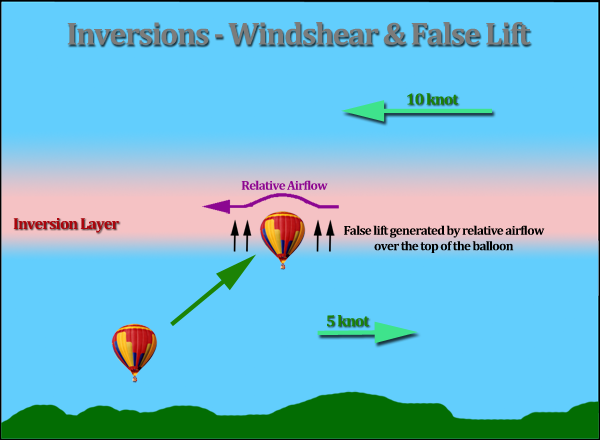
Recognising a Temperature Inversion in Flight
When flying, indicators that help in recognising a temperature inversion may be that the balloon responds slowly when you are attempting to climb or perhaps your descent rate reduces markedly during descent without the application of heat.
You may also notice that the visibility reduces as you enter the inversion layer from above or below as dust and haze tends to be concentrated within the layer. Dust, smoke and other particulate matter that reduces visibility can be lifted up to the inversion but often is not warm enough to progress through the layer into the cooler air. This leads to a concentration within the inversion with much better visibility on top of the inversion.
Temperature inversions, radiation inversion, subsidence inversion, frontal inversion, false lift, windshear, recognition of temperature inversion – Technical data content credited to Mr Steve Griffin
